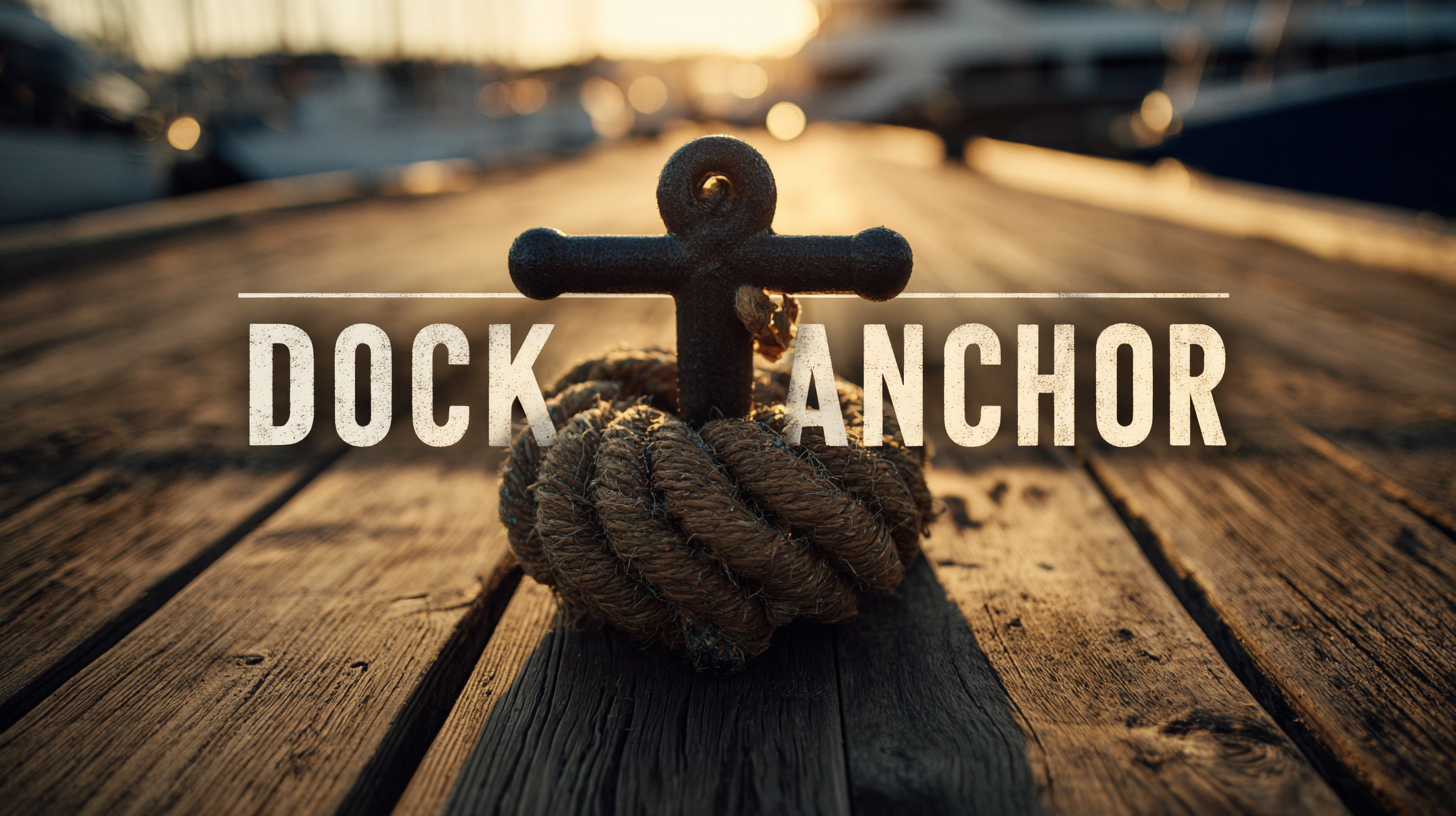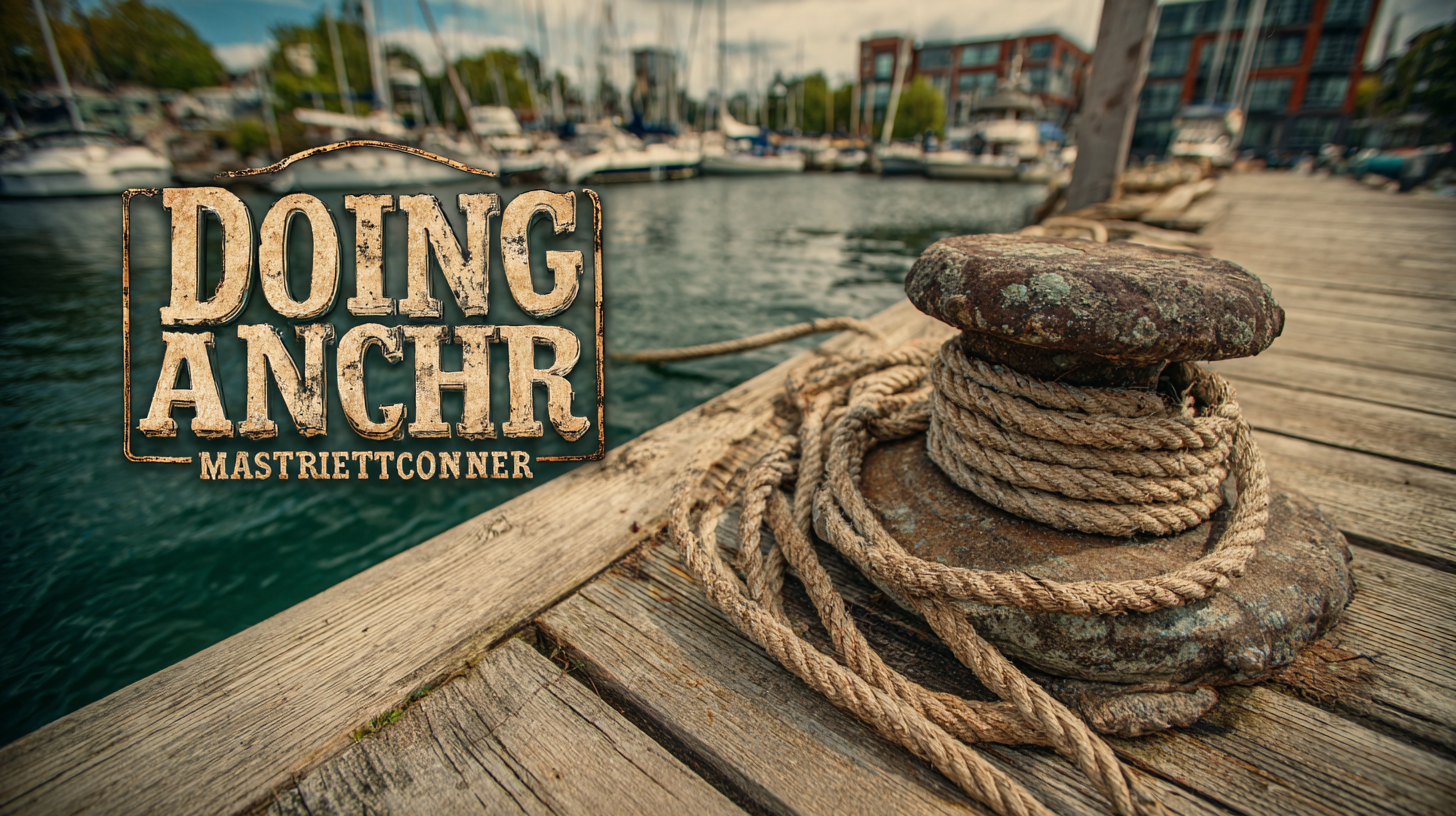
Mastering the Art of Selecting the Best Dock Anchor for Your Marine Needs
In the ever-evolving marine industry, the significance of selecting the best dock anchor cannot be overstated, especially as global trade and recreational boating continue to surge. According to a recent report by the International Marine Organization, the marine equipment market is projected to reach over $200 billion by 2025, with dock anchors playing a pivotal role in ensuring safety and reliability for vessels across various water bodies. China has emerged as a unparalleled leader in producing high-quality marine products, reflecting its status as a manufacturing powerhouse. With over 30% of the world's dock anchor exports originating from Chinese manufacturers, understanding the nuances of anchor selection has never been more critical for mariners and enthusiasts alike. This blog aims to delve into the essential aspects of dock anchor selection, highlighting the key factors and innovations that define excellence in this vital segment of marine infrastructure.

Understanding Different Types of Dock Anchors and Their Unique Benefits
When it comes to securing your dock, selecting the right anchor is crucial for ensuring stability and safety. There are several types of dock anchors, each designed to suit different marine environments and needs. The most common types include mushroom anchors, screw anchors, and pile anchors. Mushroom anchors are ideal for soft, muddy bottoms since their weight allows them to settle deeply, providing a secure hold. Conversely, screw anchors, which are twisted into the seabed, are perfect for rocky or hard surfaces due to their ability to grip tightly.
Each type of dock anchor has unique benefits that cater to specific conditions. For instance, pile anchors are effective for docks located in areas with heavy currents or wave action. These anchors are driven into the seabed and provide superior holding power. Additionally, some anchors come with adjustable features that allow for easy repositioning, making them versatile for various scenarios. Understanding these differences will help you make an informed decision, ensuring that your dock remains stable and secure no matter the conditions it faces.
Comparison of Dock Anchor Types
This chart illustrates the unique benefits of various dock anchor types, highlighting their holding power, installation complexity, and environmental impact.
How to Choose the Right Dock Anchor for Your Specific Marine Activities
Choosing the right dock anchor for your specific marine activities is crucial to ensure safety and stability on the water. According to the National Marine Manufacturers Association, nearly 70% of boating accidents are related to improper securing of boats, highlighting the importance of selecting the appropriate anchor. When considering options, it's essential to evaluate factors like the type of water conditions, boat size, and the anchor's holding power.

For instance, a study conducted by the American Boat and Yacht Council found that fluke anchors are ideal for sandy bottoms, providing excellent holding power and ease of retrieval. Conversely, a grapnel anchor may be more suitable for rocky or uneven seabeds, offering versatility in varying conditions. Additionally, anchor weight plays a vital role; larger boats generally require heavier anchors to combat wind and current, with recommendations suggesting a minimum anchor weight of one pound for every two feet of boat length. By aligning your anchor choice with your specific marine activities, you can enhance your time on the water significantly.
Key Advantages of Using Heavy-Duty Dock Anchors for Stability
Selecting the best dock anchor for marine needs is crucial for ensuring stability, particularly in challenging weather conditions.
Heavy-duty dock anchors are designed to withstand severe environmental factors, providing essential support for docks and piers during high winds and heavy rainfall.
Research indicates that the effectiveness of these anchors is significantly enhanced when reinforced, particularly in expansive soil conditions, which can become destabilized during periods of intense precipitation.
A study revealed that properly installed and constructed heavy-duty anchors can mitigate risks of damage to structures, improving their resilience to environmental stresses.
The advantages of using heavy-duty dock anchors extend beyond just structural integrity; they also contribute to safety and longevity.
According to industry reports, using high-grade materials in anchor design can increase their load-bearing capacity by up to 50%, ensuring that they remain secure under duress.
Furthermore, these anchors often feature design innovations that enhance tension distribution, reducing localized failures and providing a more stable environment for moored vessels.
As marine environments grow increasingly unpredictable due to climate factors, investing in heavy-duty dock anchors is not only a matter of convenience but also a strategic approach to safeguarding marine assets.
Lightweight Dock Anchors: A Perfect Solution for Recreational Boaters
When it comes to enhancing your recreational boating experience, selecting the right dock anchor is essential, and lightweight dock anchors are emerging as a popular solution for many boaters. These anchors offer a perfect balance of efficiency and ease of use, making them ideal for those who frequent floating docks. With the growing emphasis on waterfront infrastructure and the expanding floating docks market, the demand for versatile anchoring solutions continues to rise.
Lightweight dock anchors provide convenience without compromising on stability. Their design allows for easy handling and installation, which is particularly beneficial for recreational boaters who may prefer to minimize effort while maximizing fun. As boating activities increase alongside the development of marinas and recreational boating facilities, lightweight anchors address the need for safe and effective docking solutions without the bulkiness of traditional anchors.
This trend signifies a broader shift towards simplifying the boating experience, enabling enthusiasts to focus more on enjoyment and less on the logistics of anchoring.
Exploring Environmental Considerations When Selecting Dock Anchors
 When selecting dock anchors for marine use, environmental considerations are paramount. The choice of anchor can significantly impact the local ecosystem, especially in sensitive coastal areas. For instance, traditional heavy metal anchors may damage seabeds, disrupt habitats, and contribute to sediment disturbance. To mitigate these effects, environmentally friendly alternatives are increasingly popular. Options such as eco-anchor systems that minimize seabed disruption or biodegradable materials can help maintain marine biodiversity while providing effective anchoring solutions.
When selecting dock anchors for marine use, environmental considerations are paramount. The choice of anchor can significantly impact the local ecosystem, especially in sensitive coastal areas. For instance, traditional heavy metal anchors may damage seabeds, disrupt habitats, and contribute to sediment disturbance. To mitigate these effects, environmentally friendly alternatives are increasingly popular. Options such as eco-anchor systems that minimize seabed disruption or biodegradable materials can help maintain marine biodiversity while providing effective anchoring solutions.
Additionally, it's essential to evaluate the anchoring practices themselves. Utilizing adjustable scope ratios helps reduce the anchor's drag on the seabed, lessening its environmental footprint. Moreover, selecting anchor types that are specifically designed for local conditions—such as mud, sand, or rock—ensures better stability and reduces the risk of dragging, which can further harm marine life. By prioritizing ecological responsibility in the selection and deployment of dock anchors, boaters can contribute to the preservation of aquatic environments while securing their vessels effectively.
